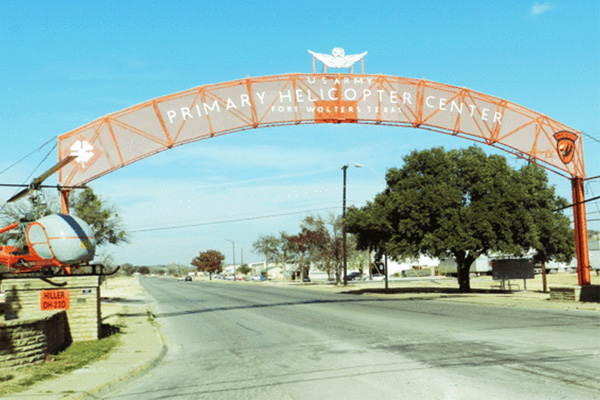Mineral Wells’ Founding
Mineral Wells’ history began in 1877 when James Alvis Lynch, his family, and 50 head of livestock left Denison, Texas, and headed west in search of a drier climate, hoping it would provide relief from malaria. Both James Lynch and his wife, Armanda, suffered from rheumatism. When the family received news of Comanche attacks further west, they decided to settle down where they were, in a valley nestled among the hills of Palo Pinto County.
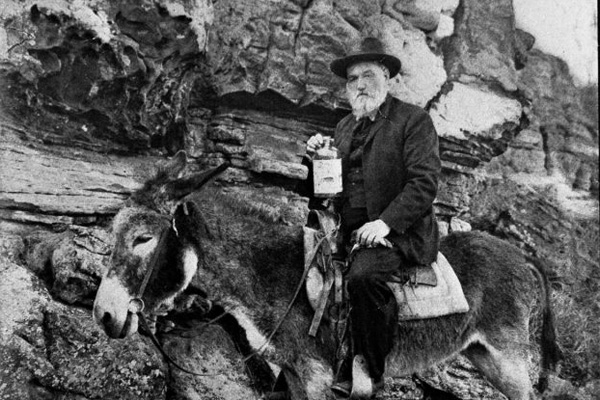
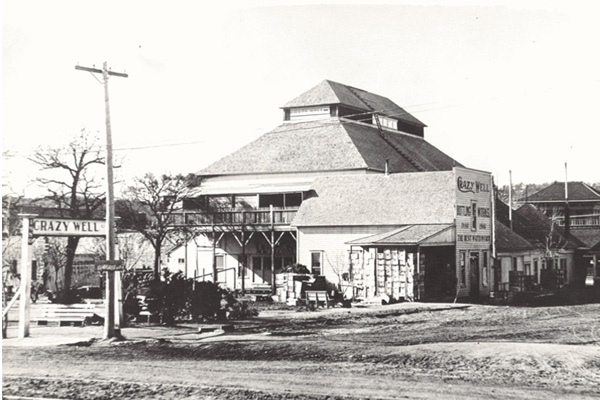
Mineral Water
Several wells were drilled soon after the city was laid out, but the most famous mineral water brand was Crazy Water from the Crazy Well. The well is currently located at the Crazy Water Retirement Hotel. The well earned its name due to a tale that tells of an elderly lady, who was believed to be mentally unstable, drinking from the Crazy Well twice daily and recovering from her illness. The story of the “crazy lady” may indeed hold some truth, as many of the water wells in Mineral Wells contain a notable concentration of lithium, a substance utilized in contemporary treatments for a range of mental and mood disorders.
Stories of Mineral Wells’ healing waters brought tourists from around the world in the early part of the 20th century. Soon bathhouses, drinking pavilions, and spas began to open to cash in. The trains that brought visitors also helped the mineral water companies distribute their products outside of the area. Entrepreneurs found more a more efficient way to ship the waters—namely by shipping the minerals only in crystal form. Those who bought the crystals could add them to their water and instantly have Mineral Wells mineral water.
During the Great Depression, mineral water companies suffered due to the luxury nature of their product and the cost of a trip to Mineral Wells. On top of this, the Food and Drug Administration began to closely monitor medical advertising, thus limiting the claims local water companies could make. During this time there were also many medical advances, lessening interest in natural healing. Most of the water companies closed by the 1940s, but one company still remains the Famous Mineral Water Company. Founded in 1904, it is the only place in Mineral Wells where you can sit at the bar, order mineral water, and enjoy the taste that built this city.
Palo Pinto County
Palo Pinto County was given its name from a creek named by the Spaniards. There is much speculation by locals as to why the creek was named “Palo Pinto,” which means “painted stick” or “painted post” in Spanish. Some say the Spaniards came through the area in autumn and admired the colorful leaves, while others claim it was because they noticed uniquely colored or spotted lichen on trees along the creek. More than likely, though, the name Palo Pinto was derived from those who noted the colorful markings painted on tree trunks by Native Americans.
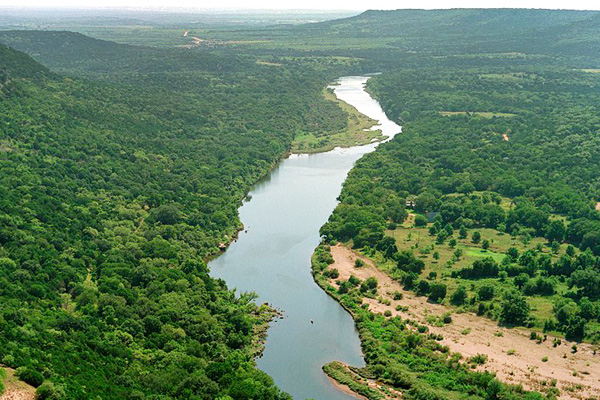
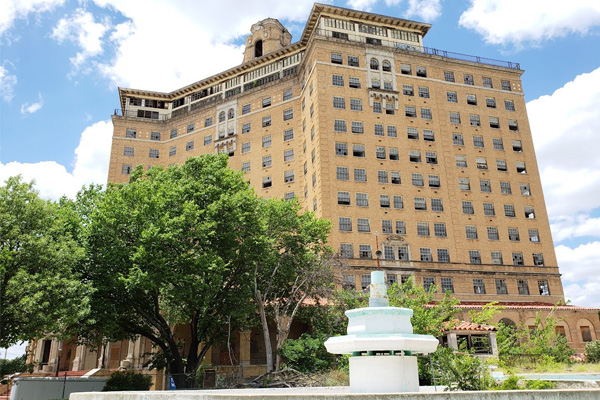
The Baker Hotel
Conceived during the confidence of the Roaring Twenties, the Baker Hotel opened in 1929 as an international resort destination. This “Grand Lady” of Mineral Wells, designed by prominent Texas architect Wyatt C. Hedrick, was built to take full advantage of the lure of the mineral waters present in Mineral Wells. The Baker reigned as one of the country’s most glamorous resorts for more than 25 years. Over time, its claim to fame only grew as Hollywood legends like Clark Gable, Judy Garland, and Lawrence Welk indulged in the hotel’s unique offerings. Unfortunately, The Baker Hotel succumbed to changing demographics, finally closing in 1972. Visit The Baker Hotel and Spa for updates on the restoration status and opening date.
Military
Old Camp Wolters: In 1925, Washington gave a grant to Brigadier General Jacob Wolters to build a training site in Mineral Wells for the mounted cavalry in Texas. This camp was named Camp Wolters and became the training site for the mounted cavalry guardsmen. Camp Wolters was designated an Infantry Replacement Center for the U.S. Army on March 22, 1941. The camp expanded from 50 acres to 7,500 acres within months. The newer part of the camp is now called Wolters Industrial Park, and Camp Wolters is now called Old Camp Wolters. During World War II, Old Camp Wolters housed German prisoners of war from North Africa. In 1945, when the war ended, both old and new Camp Wolters were deactivated. The National Guard sold Old Camp Wolters in 1965 to the Pratt brothers, who gave the majority of the property to nonprofit groups and the Mineral Wells Independent School District. Just east of Mineral Wells High School today is the original headquarters of Old Camp Wolters. Only one small rock building remains. It is maintained by the school district.
A New Life for Camp Wolters: In 1951, the government reactivated New Camp Wolters as Wolters Air Force Base. New Camp Wolters was re-designated in 1956 as Camp Wolters Army Base. In 1963, the camp was renamed as Fort Wolters permanently and served as the home for the Primary Helicopter Training Center during the Vietnam War. The new Fort Wolters saw some 40,000 students from 30 countries go through the 20-week program conducted by the Southern Airways Company. An average of 600 students graduated each month in 1967. Fort Wolters officially closed in 1973, but it took around two years to completely shut down. Most of the Fort Wolters property was sold off in the 1970s and is now privately held. The National Guard uses one portion of Fort Wolters for training purposes.
